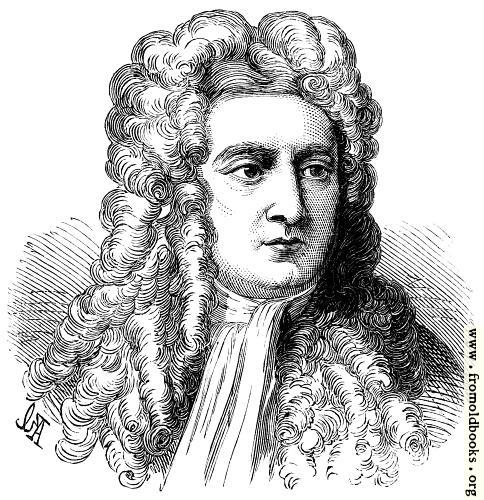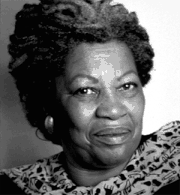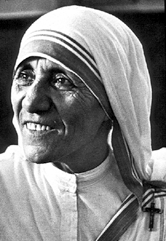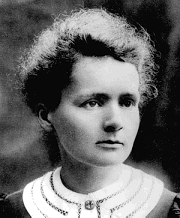Nobel Prize
"The whole of my remaining realizable estate shall be dealt with in the following way:The capital shall be invested by my executors in safe securities and shall constitute a fund, the interest on which shall be annually distributed in the form of prizes to those who, during the preceding year, shall have conferred the greatest benefit on mankind. The said interest shall be divided into five equal parts, which shall be apportioned as follows: one part to the person who shall have made the most important discovery or invention within the field of physics; one part to the person who shall have made the most important chemical discovery or improvement; one part to the person who shall have made the most important discovery within the domain of physiology or medicine; one part to the person who shall have produced in the field of literature the most outstanding work of an idealistic tendency; and one part to the person who shall have done the most or the best work for fraternity among nations, for the abolition or reduction of standing armies and for the holding and promotion of peace congresses.The prizes for physics and chemistry shall be awarded by the Swedish Academy of Sciences; that for physiological or medical works by Karolinska Institutet in Stockholm; that for literature by the Academy in Stockholm; and that for champions of peace by a committee of five persons to be elected by the Norwegian Storting. It is my express wish that in awarding the prizes no consideration whatever shall be given to the nationality of the candidates, so that the most worthy shall receive the prize, whether he be Scandinavian or not.
Every year since 1901 the Nobel Prize has been awarded for achievements in physics, chemistry, physiology or medicine, literature and for peace. The Nobel Prize is an international award administered by the Nobel Foundation in Stockholm, Sweden. In 1968, Sveriges Riksbank established The Sveriges Riksbank Prize in Economic Sciences in Memory of Alfred Nobel, founder of the Nobel Prize. Each prize consists of a medal, personal diploma, and a cash award.
 Alfred Nobel - The Man Behind the Nobel Prize
Alfred Nobel - The Man Behind the Nobel Prize
Since 1901, the Nobel Prize has been honoring men and women from all corners of the globe for outstanding achievements in physics, chemistry, medicine, literature, and for work in peace. The foundations for the prize were laid in 1895 when Alfred Nobel wrote his last will, leaving much of his wealth to the establishment of the Nobel Prize.
The Nobel Prize Medal for Physics and Chemistry
The medal of The Royal Swedish Academy of Sciences represents Nature in the form of a goddess resembling Isis, emerging from the clouds and holding in her arms a cornucopia. The veil which covers her cold and austere face is held up by the Genius of Science.
The inscription reads: Inventas vitam juvat excoluisse per artes
loosely translated "And they who bettered life on earth by their newly found mastery."
(Word for word: inventions enhance life which is beautified through art.)
The words are taken from Vergilius Aeneid, the 6th song, verse 663:
Lo, God-loved poets, men who spake things worthy Phoebus' heart;
and they who bettered life on earth by new-found mastery
The name of the Nobel Laureate is engraved on the plate below the figures, and the text "REG. ACAD. SCIENT. SUEC." stands for The Royal Swedish Academy of Sciences.
The Nobel Prize Medal for Physics and Chemistry was designed by Erik Lindberg.
The Nobel Prize Medal for Physics and Chemistry
The medal of The Royal Swedish Academy of Sciences represents Nature in the form of a goddess resembling Isis, emerging from the clouds and holding in her arms a cornucopia. The veil which covers her cold and austere face is held up by the Genius of Science.
The inscription reads: Inventas vitam juvat excoluisse per artes
loosely translated "And they who bettered life on earth by their newly found mastery."
(Word for word: inventions enhance life which is beautified through art.)
The words are taken from Vergilius Aeneid, the 6th song, verse 663:
Lo, God-loved poets, men who spake things worthy Phoebus' heart;
and they who bettered life on earth by new-found mastery
The name of the laureate is engraved on the plate below the figures, and the text "REG. ACAD. SCIENT. SUEC." stands for The Royal Swedish Academy of Sciences.
The Nobel Prize Medal for Physics and Chemistry was designed by Erik Lindberg.

The Nobel Prize Medal for Physiology or Medicine
The medal of the Nobel Assembly at the Karolinska Institute represents the Genius of Medicine holding an open book in her lap, collecting the water pouring out from a rock in order to quench a sick girl's thirst.
The inscription reads: Inventas vitam juvat excoluisse per artes
loosely translated "And they who bettered life on earth by their newly found mastery." (Word for word: inventions enhance life which is beautified through art.)
The words are taken from Vergilius Aeneid, the 6th song, verse 663:Lo, God-loved poets, men who spake things worthy Phoebus' heart;and they who bettered life on earth by new-found mastery
The name of the laureate is engraved on the plate below the figures, and the text "REG. UNIVERSITAS MED. CHIR. CAROL." stands for the Karolinska Institute.
The Nobel Prize Medal for Physics and Chemistry was designed by Erik Lindberg.

The Nobel Prize Medal for Literature
The medal of the Swedish Academy represents a young man sitting under a laurel tree who, enchanted, listens to and writes down the song of the Muse.
The inscription reads: Inventas vitam juvat excoluisse per artes
loosely translated "And they who bettered life on earth by their newly found mastery."
(Word for word: Inventions enhance life which is beautified through art.)
The words are taken from Vergilius Aeneid, the 6th song, verse 663;
Lo, God-loved poets, men who spake things worthy Phoebus' heart;
and they who bettered life on earth by new-found mastery
The name of the Leaureate is engraved on the plate below the figures, and the text "ACAD. SUEC." stands for the the Swedish Academy.
The Nobel Prize Medal for Literature was designed by Erik Lindberg.
The Nobel Peace Prize Medal
The face of the medal of the Norwegian Nobel Committee shows Alfred Nobel in a pose slightly different from that of the other medals. The inscription is the same.
The other side of the Nobel Peace Prize medal represents a group of three men forming a fraternal bond.
The inscription reads: Pro pace et fraternitate gentium
translated "For the peace and brotherhood of men".
"Prix Nobel de la Paix", the relevant year, and the name of the Nobel Peace Prize Laureate is engraved on the edge of the medal.
The Nobel Peace Prize Medal was designed by Gustav Vigeland.


The Medal for The Sveriges Riksbank Prize in Economic Sciences in Memory of Alfred Nobel
The medal for The Sveriges Riksbank Prize in Economic Sciences in Memory of Alfred Nobel shows the North Star emblem of the Royal Swedish Academy of Sciences, dating from 1815, with the words "Kungliga Vetenskaps Akademien" (The Royal Swedish Academy of Sciences) around the edge.
The upper half of the face of the medal depicts Alfred Nobel, but in a pose different from the one appearing on the Nobel Prize Medals.
Around the upper edge are the words: Sveriges Riksbank till Alfred Nobels Minne 1968 (The Sveriges Riksbank, in memory of Alfred Nobel, 1968)
The lower half displays the bank's crossed horns of plenty. This design distinguishes it from the medals of the five prizes awarded under the terms of Alfred Nobel's 1895 will.
The name of the Economics Laureate is engraved on the edge of the medal.
The Medal for The Sveriges Riksbank Prize in Economic Sciences in Memory of Alfred Nobel was designed by Gunvor Svensson-Lundqvist.























